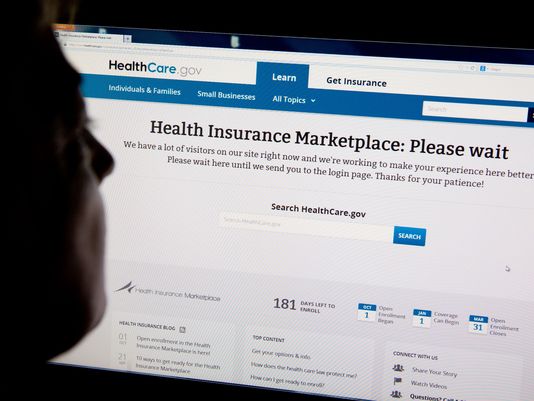(Source: AFP via USA Today)
This weekend, I read two very different takes on the three-week-old Healthcare.gov health insurance marketplace. One was hopeful; the other decidedly not. Both are worth your time.
Writing for the National Review, Yuval Levin explains that he spoke to several longtime sources at the Centers for Medicare and Medicaid Services to understand what went so wrong. This is what he discovered:
The reaction of these individuals to what has happened in the last two weeks is the reaction of people who are coming to realize that their expectations and understanding of web development were mistaken. They believed (as I did too, I admit) that whatever technical problems the exchange sites encountered at first could be cleared up quickly and simply once things got going—that the contractors developing the websites could just respond to problems on the fly, as they became apparent. It is now increasingly obvious to them that this is simply not how things work, that building a website like this is a matter of exceedingly complex programming and not “design,” and that the problems that plague the federal exchanges (and some state exchanges) are much more severe and fundamental than anything they imagined possible.
Levin acknowledges that he is an opponent of the Affordable Care Act, but it would be wrong to dismiss his observations and insights.
One key worry is based on the fact that what they’re facing is not a situation where it is impossible to buy coverage but one where it is possible but very difficult to buy coverage. That’s much worse from their point of view, because it means that only highly motivated consumers are getting coverage. People who are highly motivated to get coverage in a community-rated insurance system are very likely to be in bad health. The healthy young man who sees an ad for his state exchange during a baseball game and loads up the site to get coverage — the dream consumer so essential to the design of the exchange system—will not keep trying 25 times over a week if the site is not working.
The second piece, by the New Republic‘s Jonathan Cohn, takes a glass half-full approach. While Cohn does not defend the problems plaguing the federal website, which handles enrollment for residents of 36 states, he praises the way the process is working in the remaining states, which have designed their own enrollment websites and do not rely on the feds.
But if these past two weeks appear to reflect poorly on the federal bureaucracy and the Administration managing it, they shouldn’t reflect poorly on health care reform itself—which, after all, has worked in Massachusetts and seems to be working in the states running their own operations. The success of states like Kentucky and New York and Connecticut and California are important for their own sake: By my count, they constitute about a fourth of the national population. But they are also important for what they show about how the law can work, once the technology piece is in place.
Cohn also thinks time is on the side of those signing up. After all, the open enrollment period extends to March 31 (although folks have to sign up by Feb. 15 to avoid a penalty).
The Obama administration leaked figures to the Associated Press on Saturday night that suggest nearly 500,000 people have created accounts in the state and federal exchanges. But the selective release of data—site visitors and applications created—continues to keep under wraps information on those who actually enrolled in a health plan. This data, not visits or applications, will determine the success or failure of this venture. Dan Diamond has the best roundup of applications vs. enrollments around.
Charles Ornstein writes for ProPublica, where this originally appeared.







0 Comments